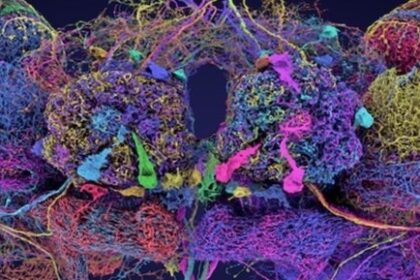Hi readers!
On October 21st, 2023, Analyticsindiamag.com published a list of the 6 most common autonomous artificial intelligence agents which I think should be shared with you so that you can hence your knowledge.
Autonomous agents are AI-powered programs capable of creating and finishing tasks by themselves. Also, they can reprioritize and repeat this process until they achieve their goal.
Since early 2023, lots of research is being conducted in the area of “Autonomous AI Agents” (AAA) particularly with the background of Large Language Models (LLMs) which changed the way one can interacts with internet or the web whether it is sending emails, making product’s purchases, fulfilling orders, or even booking flight tickets to the extent of how LLMs are going to be built in the near future.
LLMs are very large deep learning models that are pre-trained on vast amounts of data. The underlying transformer is a set of neural networks that consist of an encoder and a decoder with self-attention capabilities. This means, it is a type of language model which possesses the ability to achieve general-purpose language understanding and generation: an algorithm that uses deep learning techniques and large data sets to understand, summarize, generate and predict new content.
I already blogged and vlogged on Generative Artificial Intelligence (GAI, capable of generating text, images, or other media, using generative models that learn the patterns and structure of their input training data and then generate new data with similar characteristics) which is also closely connected with LLMs: a type of generative AI that has been specifically architected to help generate text-based content.
Currently, LLMs are dependent on human guidance as they lack autonomous reasoning whereas autonomous agents can operate independently, making real-time decisions and adapting to changing scenarios.
One of the breathtaking application of AAA is their ability to enhance LLMs’ performance because they collaborate in multi-agent conversations that enables LLMs to improve through feedback and reasoning exchange.
Microsoft recently has produced “AutoGen” while DeepMind of Google published a paper on “How Far are LLM Models from Agents with theory of Mind”? Even Meta’s Shepherd: A Critic for Language Model Generation talks about the same autonomous AI agents that are doing tasks all by themselves.
Other papers also include SELF: Language Driven Self Evolution for LLMs and SelfEvolve: a code evolution framework that can be used via LLM. Flowing are the most recent autonomous AI agents.
AutoGen
Microsoft’s AutoGen enables LLM build applications using multiple agents who can talk to each other, control LLMs to create multipurpose agents capable of learning, adapting, and even coding. This fusion of abilities, coupled with features like catching human intervention, empowers AI systems to evolve and thrive.
AutoGen simplifies the creation of next-generation LLM applications, automating and optimizing complex workflows, supports diverse conversation patterns, and developers and can customize agent interactions. It offers a variety of working systems for different applications and can replace Open AI’s tools for enhanced inference APIs (Application Programming Interface).
In APIs, the word Application refers to any software with a distinct function. Interface can be thought of as a contract of service between two applications. This contract defines how the two communicate with each other using requests and responses.
MusicAgent
Microsoft recently introduced Music Agent which is an LLM-powered autonomous agent in the music domain. MusicAgent help developers to automatically analyze user requests and select appropriate tools as solutions. Their new framework directly integrates numerous music-related tools from various sources. The researchers have adapted the autonomous workflow to enable better compatibility in musical tasks, allowing users to extend their toolset.
Mini-AGI
Mini AGI is an autonomous agent that works seamlessly with GPT3.5-Turbo and GPT-4 through the use of a sturdy prompt along with a minimal toolkit, a chain of thoughts, and a short-term memory incorporating summarization. It possesses the ability for inner monologue/lecture and self-critique.
Multi-GPT
Multi-GPT is an experimental multi-agent system including “expert-GPT” that collaborate to accomplish tasks. Each expert-GPT possesses individual short and long-term memory and the ability to communicate with others. Users can assign tasks, and the expert-GPT will work together to complete them.
The system offers internet access for information gathering and searching. It manages short and long-term memory efficiently and GPT-4 for text generation, provides access to popular websites and platforms, and includes file storage and summarization using GPT-3.5. This makes Multi-GPT a multipurpose tool for various tasks and data management needs.
Bee-Bot
Bee-Bot is an autonomous AI assistant designed to streamline and automate a wide range of tasks. With Bee-Bot, users can experience the convenience of selecting tools via Auto-Pack (a Python library and CLI (Command Line Interface which is a text-based interface where one can input commands that interact with computer’s operating system) designed to interact with the Auto-Pack repository: a collection of tools for AI. It is designed to be agent-neutral with a simple interface, offering the flexibility to acquire additional tools as the tasks evolve. The inclusion of built-in diligence ensures that Bee-Bot can remember and recall information which makes it a more reliable assistant that can easily work with different systems and services. Bee-Bot also keeps you in the loop by using a Web Socket server to share updates in real-time. It’s adaptable to different ways of storing files, like in memory on your computer, or in a database.
Baby-AGI
Baby-AGI is also a Python script that streamlines task management through using OpenAI and Pinecone APIs (a managed cloud-based vector database with a simple API and no infrastructure hassles. This system excels in creating, organizing, prioritizing, and executing tasks based on predefined objectives, all learned from past tasks.
Baby AGI controls Open AI’s natural language processing (NLP) capabilities to craft new tasks that align with set objectives. Pinecone serves as the repository for storing task results and retrieving context, while the LangChain framework (designed to simplify the creation of applications using large language models) handles decision-making.
Did you realize, dear readers, how fast various facets of Artificial Intelligence are advancing? Time is not far when it will change in a wink of an eye. Be prepared for that if you want to stay abreast of artificial intelligence else, you will lag never to be able to catch up.
See you next week. Take care, Bye.





